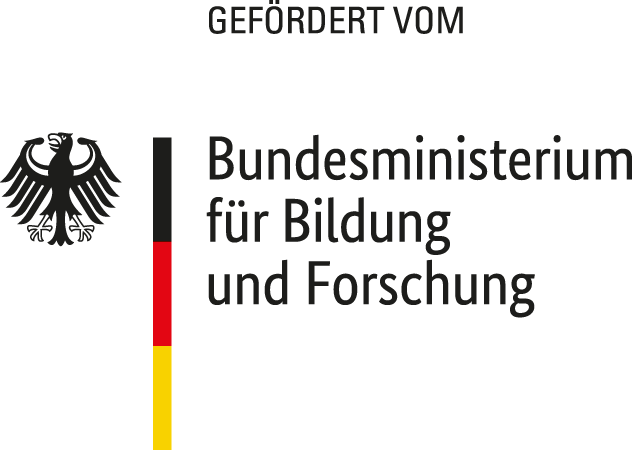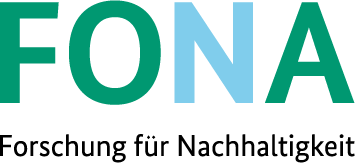Coordination
Veolia Klärschlammverwertung Deutschland GmbH
Nordstraße 15
04420 Markranstädt
Projektleitung
Matthias Hoger
Tel. +49 34205 738-19
Tel. +49 163 73800-11
matthias.hoger@veolia.com
Claudyn Kidszun
Tel. +49 163 73800-28
claudyn.kidszun@veolia.com
Partner institutions
- Carbotechnik GmbH, Geretsried
- Pontes Pabuli GmbH, Leipzig
- LTC – Lufttechnik Crimmitschau GmbH, Crimmitschau
- Fraunhofer IKTS, Dresden
- MFPA – Materialforschungs- und prüfanstalt an der Bauhaus-Universität Weimar, Weimar
Funding period
01.07.2020 – 30.06.2025
Webseite
Projekt sheet
DreiSATS
Technology demonstration of the combination of dust firing and acid digestion granulation with integrated heavy metal separation for regional phosphorus recycling in the "Middle German border triangle" of Saxony-Anhalt, Thuringia and Saxony (DreiSATS)
Abstract
The aim of the joint project is the practical prototype testing and demonstration of an innovative, economically and technically viable process chain for thermal sewage sludge utilization with phosphorus recycling and product usage for the model region “Middle German Tri-border region”. It is to be shown on a technically relevant scale that marketable fertilizer products can be produced from sewage sludge in a consistently good quality and quantity. The fertilizer can be utilized both regionally and, if necessary, nationally.
Regional thermal utilization is a core element of the application strategy. In order to avoid the problems often encountered with large centralized plants, such as high transport volumes and a lack of heat suppliers, an approach with decentralized sewage sludge incineration plants with lower capacity and upstream drying is to be pursued in DreiSATS in the future.
The separation/reduction of heavy metals is possible directly during incineration as well as in the P-recycling process of the ashes. This results in a high product safety independent of the properties of the input sludge while also allowing enough flexibility to adjust the technical and economical optimum of the process control.
The aim of the concept is the regional and sustainable recycling of the produced sewage sludge, a pollutant sink and the closing of regional nutrient cycles with the lowest possible transport costs.
Focus of work
- Characterization of sewage sludge, sewage sludge ashes and alternative input materials
- Combustion tests with the pilot plant dust firing to determine process parameters
- In-situ modification and hot gas filtration for heavy metal separation in the dust firing
- Ash evaluation and site-specific recipe development for P-recycling and fertilizer granulate production
- Conception, planning and construction of a pilot plant for P-recycling
- Testing of the entire process chain as well as evaluation and testing of fertilizer products
- Development of the Geoinformation System (GIS)-based software tool for the planning of an
economic, regional P-recycling concept
Main work packages
Abstract
In the main work package (WP) 1, the data basis for the dust firing in combination with the regionally available sewage sludge and sewage sludge ashes is created. A prominent goal is the analysis and evaluation of the input materials. Apart from the material data, a logistic evaluation of sewage sludge origins as well as alternative, phosphorus-containing input materials takes place. On basis of this data acquisition the selection, the supply and, if necessary, pre-treatment of the sewage sludges as well as sewage sludge ashes occurs.
Abstract
An essential part of the work are the combustion tests with the existing pilot plant. The dust firing is systematically tested to determine suitable process windows for the input material sewage sludge with the aim of optimizing emission values and to determine possible restrictions regarding the sewage sludge input. Furthermore, the integration of the in-situ ash modification and the hot gas filter unit into the existing dust firing system is planned. For this purpose, individual technologies for ash modification and hot gas filtration will be developed and investigated in a laboratory and pilot plant scale. Subsequently, the existing pilot plant for dust firing will be converted, extended and put into continuous operation for sewage sludge firing. The ashes produced within the scope of WP 2 will be used for the development and test production of fertilizer granulates according to the Pontes Pabuli process (WP 3).
Abstract
In WP 3, the P-recycling and the experimental production of fertilizer granules is carried out. The aim of this main work package is the implementation and demonstration of the semi-industrial scale production of fertilizer granules according to the Pontes Pabuli process including the process steps acid digestion, heavy metal separation and granulation. In addition to the analytical evaluation, investigations regarding the plant availability of the nutrients as well as the evaluation of the phytotoxicology are carried out.
Abstract
Within the framework of WP 4, the GIS-based software tool programmed in the concept phase will be completed by the data generated in WP 1, 2 and 3 on sludge and ash properties, producible fertilizer granules, etc. By adding other nutrient groups, the system can be extended in the medium term to a digital instrument for a more comprehensive regional nutrient management of organic waste sources. The GIS-based selection of possible sites for the regional thermal utilization of sewage sludge is a main objective.
Abstract
Based on the results of WP 1 to WP 4, WP 5 includes the process balancing, the preparation of ecoand greenhouse gas balances, the development of a life cycle analysis and the examination of the transferability to other regions. In preparation for commercialization, the results will be analysed and discussed with the identified stakeholders. In order to involve all stakeholder groups, a stakeholder management system will be established with regular workshops throughout the project.
Abstract
The WP 6 includes tasks regarding the structured exchange of information between the project partners, project monitoring, planning of further work and public relations (press releases, lectures, conferences, scientific publications). The aim of this main work package is the bundling, distribution and coordination of the results generated in the project.
Keywords
sewage sludge, ash, ash modification, fertilizer production, phosphorus recycling, acid digestion, dust firing, Pontes Pabuli process, continuous operation, heavy metal separation, geographic information system (GIS), granulation, hot gas filtration, sewage plant, sewage sludge, sewage sludge ash, sewage sludge disposal, sewage sludge incineration, sewage sludge utilization, mono incineration, planting trials
Exploitation strategy
After project completion, the project partners will have access to novel technologies as well as a flexibly applicable process chain, which, compared to the currently applied processes, has a significantly improved energy and material efficiency as well as a much broader range of input materials. Based on the above-mentioned prospects of success and the realization of the political goals in Germany and the European Union, it is assumed that the technologies and services (disposal) to be developed within the project for the processing of sewage sludge into fertilizer products will find broad application. In order to achieve the highest possible economic exploitation of the project results, current norms and standards will be considered during the development and used as a benchmark for the development of the process concept. These include the requirements of the safety regulations, the choice of materials and the necessary quality of the final product.

